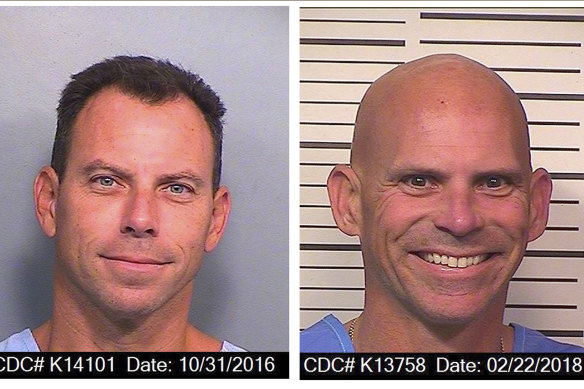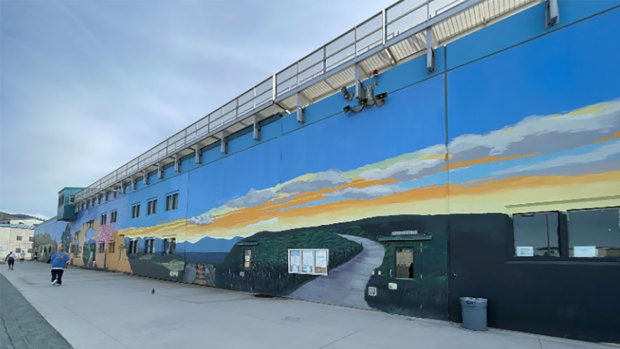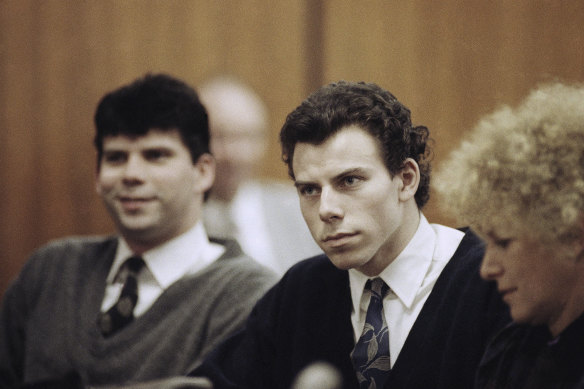The Menendez brothers adopted Norway’s approach to develop a green space in prison
By Vanessa Gera, Jan M. Olsen and Stefanie Dazio
Copenhagen: Nearly 30 years after they killed their parents, Erik and Lyle Menendez launched a beautification project in the California prison where they’re serving life sentences.
Their project was inspired by the Norwegian approach to incarceration that believes rehabilitation in humane prisons surrounded by nature leads to successful reintegration into society, even for those who have committed terrible crimes.

Erik (left) and Lyle Menendez in photos supplied by the California Department of Corrections and Rehabilitation.Credit: AP
Norway is a long, narrow country in northern Europe, running 1750 kilometres from north to south. It has set up small prisons across the country, which allows people to serve their sentences close to home, said Kristian Mjaland, a Norwegian associate professor of sociology at the University of Agder in Kristiansand.
The entire country has about 3000 people in prison, he said, putting Norway’s per capita incarceration rate at roughly one-tenth that of the United States.
Norway also has some of the world’s lowest levels of recidivism. Government statistics give the proportion of people reconvicted within two years of release in 2020 as 16 per cent, a figure that declines each year.
Meanwhile, a US Department of Justice survey carried out over a decade found that 66 per cent of people released from state prisons in 24 states were rearrested within three years, and most of those were incarcerated again.

A mural inside the prison yard at the San Diego jail, where the Menendez brothers launched a beautification program in 2018.Credit: AP
Mjaland said Norway’s incarceration system was based on the principles that people should be “treated decently by well-trained and decent staff” and have “opportunities for meaningful activities during the day” – an approach he called the “principle of normality” – and that they should retain their basic rights.
Mjaland, whose research has focused on punishments and prisons, said that, for instance, prisoners in Norway retained the right to vote and to access services such as libraries, healthcare and education delivered by the same providers working in the wider community.
Norway also operates open prisons, some on islands where there is a lot of farm work and contact with nature. The most famous is on the island of Bastoey, “which is very beautifully located in the Oslo Fjord,” Mjaland said.
Even Anders Behring Breivik, who killed eight people in the 2011 bombing of a government building in Oslo, then gunned down 69 more at a holiday camp for left-leaning youth activists, has a dining room, a fitness room and a TV room with an Xbox. His cell wall is decorated with a poster of the Eiffel Tower and parakeets share his space.
The idea of creating normal, humane conditions for people in prison is starting to spread in the US as well.
The Pennsylvania Department of Corrections has in recent years been trying to apply certain elements of the Nordic approach. It unveiled a program it calls “Little Scandinavia” in a prison in Chester in 2022.
The Menendez brothers’ case was again in the public spotlight on Thursday when the Los Angeles County district attorney recommended that their sentences of life without parole be thrown out. Prosecutors hope a judge will resentence the brothers so they can be eligible for parole.
If the judge agrees, a parole board must then approve the brothers’ release. The final decision rests with the California governor.

Lyle (left) and Erik Menendez with defence attorney Leslie Abramson in Beverly Hills Municipal Court in 1990.Credit: AP
The Menendez brothers’ lawyer and the LA district attorney said the pair had served enough time, citing evidence that they suffered physical and sexual abuse at the hands of their entertainment executive father.
They also say the brothers, now in their 50s, are model prisoners who have committed themselves to rehabilitation and redemption.
Both point to the brothers’ years of efforts to improve the San Diego prison where they have lived for six years. Before that, the two had been held in separate prisons since 1996.
In 2018, Lyle Menendez launched the beautification program, Green Space, at the Richard J. Donovan Correctional Facility. His brother, Erik, is the lead painter for a massive mural that depicts San Diego landmarks.
“This project hopes to normalise the environment inside the prison to reflect the living environment outside the prison,” Pedro Calderon Michel, deputy press secretary for the California Department of Corrections and Rehabilitation, told AP.
The Menendez brothers’ work is ongoing, with the ultimate goal of transforming the prison yard “from an oppressive concrete and gravel slab into a normalised park-like campus setting surrounded by a majestic landscape mural”, according to the project’s website.
The final product will include outdoor classrooms, rehabilitation group meeting spaces and training areas for service dogs.
The prison system recently launched the “California model” in the hopes of starting similar projects across the state to build “safer communities through rehabilitation, education and re-entry”, Calderon Michel said.

One of the interiors at Halden Prison in Norway that offers a model of rehabilitative design. Credit: Erik Møller Arkitekter
The brothers’ lawyer, Mark Geragos, said he believed Lyle Menendez learnt about the Norwegian model during his university classes.
Lyle Menendez is currently enrolled in a masters program and has studied urban planning and recidivism, and Geragos said his client hoped the beautification would make reintroduction into society easier for people who are paroled.
“When you’re there in a grey space that is not very welcoming, it’s disorienting to some degree,” Geragos said.
“And also you have the issue that the terrain is not something that’s welcoming or helpful in terms of being acclimated and being re-acclimated into a community.”
Dominique Moran, a professor at the University of Birmingham, said she found in her research that introducing green spaces in prisons improved the wellbeing of prisoners as well as correctional staff.
“Green spaces in prisons reduce self-harm and violence, and also reduces staff sickness,” said Moran, author of Carceral Geography: Spaces and Practices of Incarceration.
Moran has studied prisons around the world, and said in a statement that in the Scandinavian approach, “people go to prison AS punishment, not FOR further punishment”.
“The deprivation of liberty is itself the punishment,” she said. “There should not be further punishment through the nature of the environment in which people are held.”
AP
Get a note directly from our foreign correspondents on what’s making headlines around the world. Sign up for our weekly What in the World newsletter.